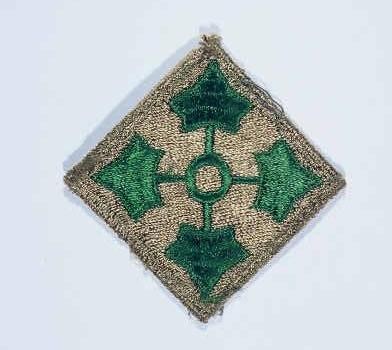The 4th Infantry Division during World War II
In 1985, the United States Holocaust Memorial Museum and the US Army Center of Military History began a program to honor US Army divisions that took part in the Allied liberation of Nazi camps. The US Army Center of Military History defines a liberating division as one whose official records show its presence at a camp within 48 hours of the first soldier’s arrival. The 4th Infantry Division is among the 36 US divisions that have been recognized to date.
Key Facts
-
1
US, British, Soviet, and Canadian troops encountered concentration camps and other sites of Nazi crimes as they advanced across Europe in 1944 and 1945.
-
2
The Allied soldiers liberated sick and starving camp prisoners from Nazi tyranny. They also provided them with food, clothing, and medical aid.
-
3
The United States Holocaust Memorial Museum and the US Army Center of Military History have recognized 36 US divisions for their role in the liberation of Nazi camps.
4th Infantry Division Campaigns during World War II
Created in late 1917, the 4th Infantry Division served with distinction during World War I. On June 6, 1944 (D-Day), the "Ivy" division was the first US unit to land on Utah Beach. Two months later, on August 25, 1944, it liberated Paris. In September, it crossed the border into Germany, fighting in the Hürtgen Forest and in the Battle of the Bulge. In late March 1945, the 4th crossed the Rhine River and a few weeks later captured the German city of Nuremberg. By the end of April, the unit had advanced deep into Bavaria.
The 4th Infantry Division and the Liberation of Haunstetten
During the march into southern Germany, the 4th discovered in late April 1945 the site of a Dachau subcamp near Haunstetten. Built to service a Messerschmitt aircraft plant, Haunstetten was one of the biggest subcamps in Nazi Germany. On April 13, 1944, Allied air attacks had destroyed the plant and the camp that serviced it.
Recognition as a Liberating Division
The 4th Infantry Division was recognized as a liberating unit by the US Army's Center of Military History and the United States Holocaust Memorial Museum in 1992.
4th Infantry Division Battle Casualty Figures
Hundreds of thousands of US servicemen and women died or were wounded in the fight against Nazi tyranny.
The total number of battle casualties for the 4th Infantry Division in the European Theater of Operations during World War II was 22,660. In this case, “battle casualties” includes all personnel who were unable to fight in battle because they were wounded, missing, captured, or killed.
Among the battle casualties suffered by the 4th Infantry Division, there were 4,907 deaths.
4th Infantry Division Nickname and Insignia
The 4th Infantry Division's nickname is the "Ivy Division.” The nickname is derived from the divisional insignia developed during World War I. The 4th Infantry Division’s insignia or patch is in the shape of a diamond. It depicts four green ivy leaves against a khaki background. The leaves are connected by stems to a circle in the center of the patch. The ivy leaves symbolize the number “IV” written in Roman numerals and colloquially read out loud as the word “ivy.”

Footnotes
-
Footnote reference1.
In the aftermath of World War II, the US Department of the Army compiled casualty figures for US Army personnel. The US government published these figures in 1953. The report listed casualty numbers for the US Army for the period from December 7, 1941 (Pearl Harbor) through December 31, 1946, when US President Harry S. Truman officially declared the end of war hostilities. Army Battle Casualties and Nonbattle Deaths: Final Report, 7 December 1941-31 December 1946, Prepared by the Statistical and Accounting Branch, Office of the Adjutant General, Under the Direction of the Program Review and Analysis, Division of the Comptroller of the Army, O.C.S., (Washington: Department of the Army, 1953), p. 3-4, 84-89.
Critical Thinking Questions
What challenges did Allied forces face when they encountered the camps and sites of other atrocities?
What challenges faced survivors of the Holocaust upon liberation?

